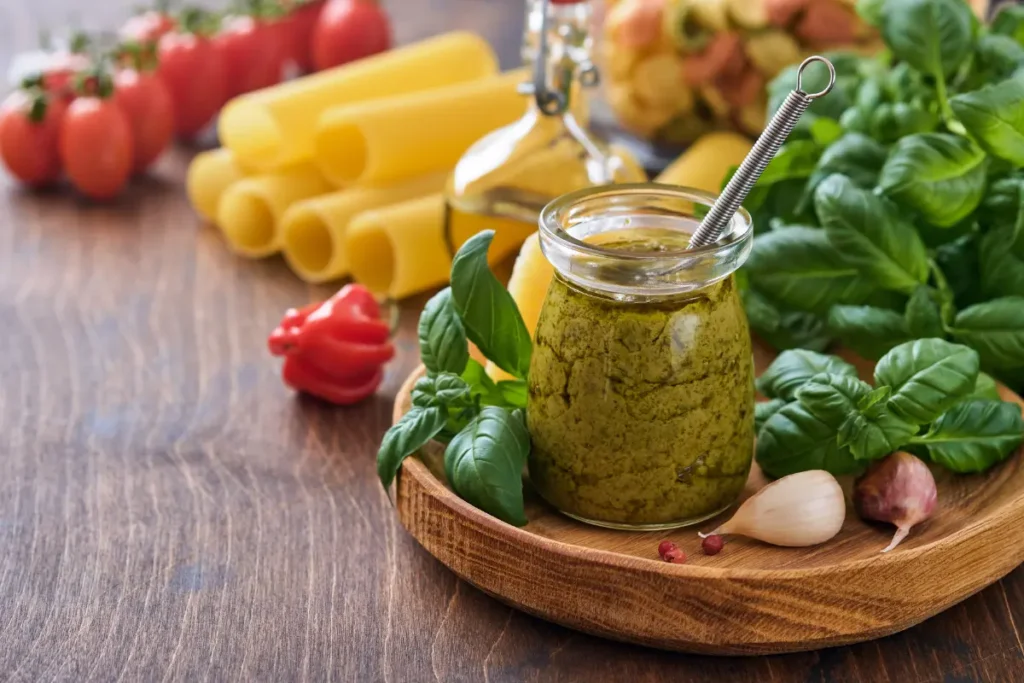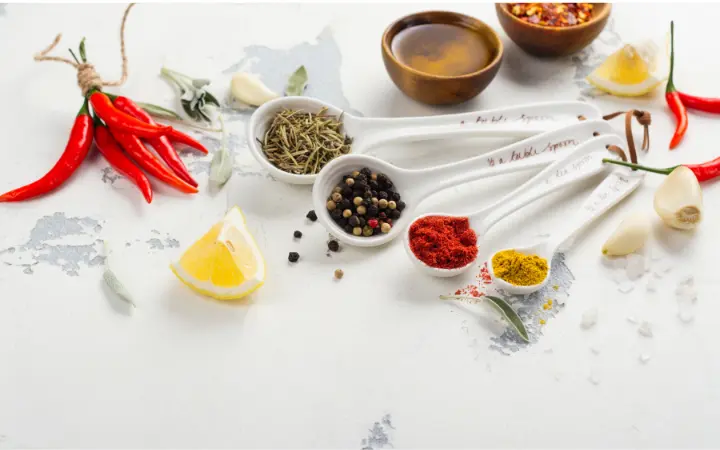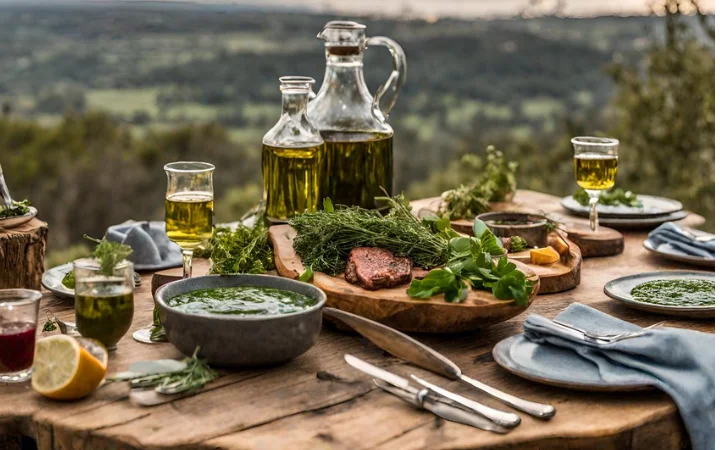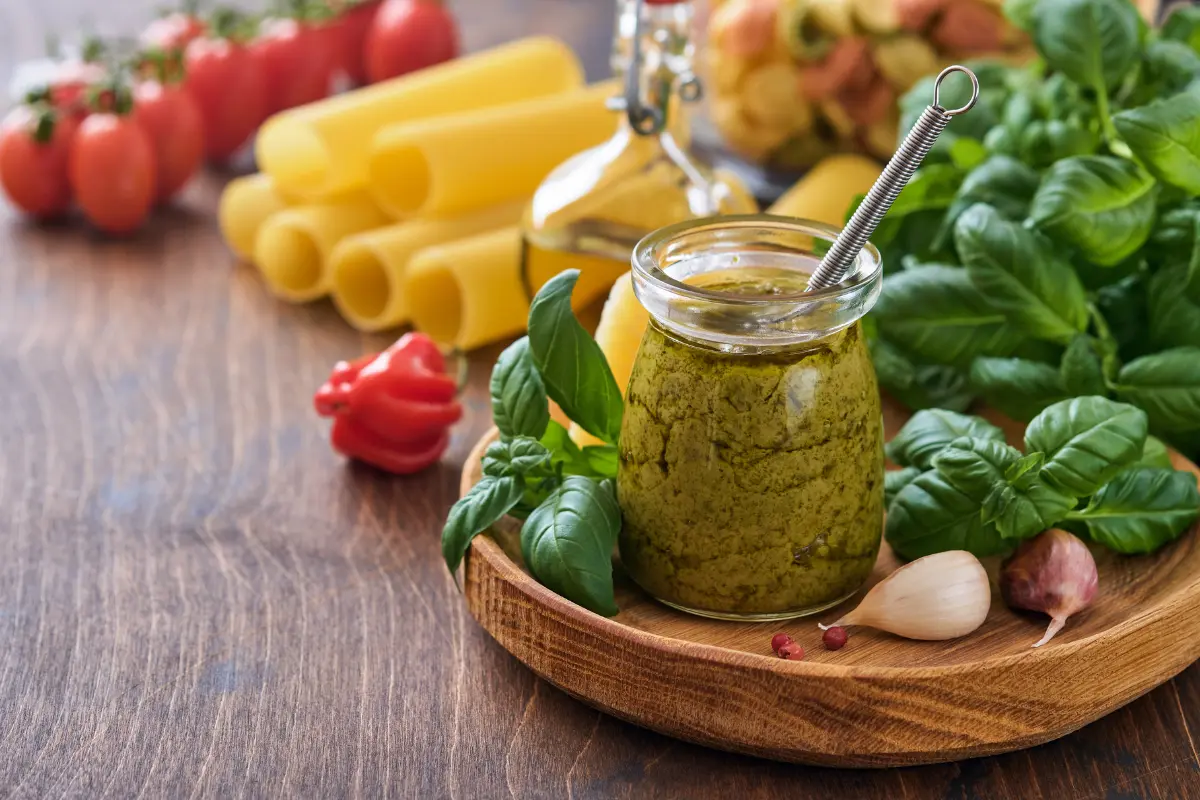Dive into the vibrant world of Chimichurri, a beloved Argentinian sauce celebrated for its rich flavors and versatility. This article explores its origins, ingredients, and culinary uses, offering insights into making and enjoying this delightful condiment. Perfect for food lovers eager to expand their culinary horizons!
Introduction to Chimichurri
Chimichurri, a word that dances on the tongue as playfully as the sauce itself tantalizes the taste buds. This Argentinian gem, renowned for its symphony of flavors, has woven its way into the hearts of food lovers worldwide, transforming the ordinary into the extraordinary
The Origin and Cultural Significance
Originating from the vast pampas of Argentina, Chimichurri is much more than a mere condiment. It’s a cultural emblem, a culinary tradition passed down through generations. Legend has it that the sauce was first concocted by gauchos, who used it to add zest to their grilled meats. Today, it’s an indispensable part of the Argentinian asado, or barbecue, a social event that’s as much about community as it is about food.
Overview of Chimichurri
At its core, Chimichurri is a vibrant blend of fresh herbs, garlic, oil, and vinegar. The classic green version, Chimichurri Verde, is a harmony of parsley, cilantro, and oregano, while the red variant, Chimichurri Rojo, introduces bell peppers and tomatoes into the mix. Each ingredient plays its part, creating a sauce that’s earthy, tangy, and subtly spicy
As we delve deeper into the world of Chimichurri, we’ll uncover the secrets of its preparation, the nuances of its flavors, and the myriad ways it can elevate a dish. So, grab your apron, and let’s embark on this culinary adventure!

Ingredients and Variations
Chimichurri, in its essence, is a celebration of simplicity and freshness. The choice of ingredients and their proportions can transform this humble sauce into a culinary masterpiece.
Key Ingredients of Chimichurri
The foundation of Chimichurri lies in its fresh herbs. Parsley offers a grassy freshness, cilantro adds a hint of citrus, and oregano brings a touch of earthiness. These herbs, finely chopped, create a verdant base for the sauce. Garlic infuses a pungent kick, essential for that characteristic zing, while the choice of oil – typically extra-virgin olive oil – lends a smooth, velvety texture. The acidity of red wine vinegar balances the sauce, giving it a bright, invigorating edge. Each ingredient is crucial, contributing to the sauce’s complex yet harmonious flavor profile.
Variations of Chimichurri
While the traditional Chimichurri Verde is beloved, regional variations abound. In some parts of Argentina and Uruguay, the addition of red bell pepper and tomato creates Chimichurri Rojo, a sauce with a sweeter, more rounded flavor. Some modern interpretations even incorporate ingredients like smoked paprika or lemon juice, showcasing the sauce’s versatility and adaptability to personal tastes.
The beauty of Chimichurri lies in its flexibility. Whether used as a marinade, a condiment, or a dressing, it can be tweaked to suit the dish it accompanies. This adaptability has led to its widespread popularity, transcending borders and finding a place in kitchens around the world.
In the next part of our journey through the world of Chimichurri, we’ll delve into the art of preparing this iconic sauce and discover how it can elevate various dishes, from grilled meats to vegetarian options. Stay tuned for these flavorful insights!

Preparation and Usage
Mastering the art of Chimichurri is about understanding the delicate balance of its ingredients and the versatility of its usage in various culinary contexts.
How to Prepare Chimichurri
Creating the perfect Chimichurri is a dance of precision and intuition. Start by finely chopping the fresh herbs – parsley, cilantro, and oregano – to release their aromatic oils. Mince the garlic finely to ensure its flavor infuses throughout the sauce. In a bowl, combine these with red wine vinegar, which acts as the acidic backbone, giving Chimichurri its signature tang. Gradually whisk in the olive oil to create an emulsion, balancing the acidity and adding a silky texture. Season with salt, and for a bit of heat, red pepper flakes are a welcome addition. Letting the sauce rest for a few hours allows the flavors to meld beautifully.
For a more robust flavor, some prefer to let the garlic, vinegar, and spices marinate together before adding the herbs and oil. This step can deepen the flavors, creating a more complex profile. Remember, the key to a great Chimichurri is in the freshness of the ingredients, so always opt for the freshest herbs and highest quality olive oil you can find.
Culinary Uses of Chimichurri
Chimichurri’s versatility in the kitchen is unmatched. As a marinade, it tenderizes and infuses meats with its herbaceous, garlicky goodness. It’s particularly splendid with grilled steak, where it cuts through the richness of the meat. But it’s not just for carnivores – drizzle it over grilled vegetables or baked potatoes for an instant flavor upgrade. Chimichurri also shines as a condiment, adding a fresh, zesty kick to everything from empanadas to roasted chicken. Its vibrant flavor can even transform simple dishes like scrambled eggs or avocado toast into something extraordinary.
Beyond the traditional uses, Chimichurri can be a creative addition to various dishes. Try it as a base for salad dressings, a topping for pizzas, or even as a vibrant addition to soups and stews. Its ability to add depth and brightness makes it a valuable tool in any culinary arsenal.
In the next section, we’ll explore the nutritional aspects of Chimichurri and how it fits into various dietary considerations. Stay tuned for a deep dive into the health benefits of this delightful sauce!

Nutritional and Dietary Information
Chimichurri isn’t just a feast for the taste buds; it’s also a boon for health-conscious food lovers. This section delves into its nutritional profile and dietary benefits.
Health Benefits of Chimichurri
Chimichurri is a powerhouse of nutrients, thanks to its fresh, natural ingredients. The herbs used, like parsley and cilantro, are rich in vitamins A and C, essential for immune health and skin vitality. They also contain antioxidants, which combat free radicals and promote overall health. Garlic, another key component, is renowned for its anti-inflammatory and heart-healthy properties. The olive oil in Chimichurri is a source of monounsaturated fats, beneficial for heart health and cholesterol levels. Moreover, the sauce is low in calories, making it an excellent choice for those monitoring their calorie intake.
Dietary Considerations
For those on specific dietary regimens, Chimichurri is a dream. It’s inherently gluten-free, making it safe for those with celiac disease or gluten sensitivity. Its plant-based nature also makes it suitable for vegetarians and vegans. For those following a low-carb or ketogenic diet, Chimichurri is an ideal condiment, as it’s low in carbohydrates yet high in flavor. Additionally, it’s free from dairy, making it a great option for lactose-intolerant individuals.
But the benefits don’t stop there. The ingredients in Chimichurri, particularly the herbs and olive oil, have been linked to various health benefits, including improved digestion and anti-inflammatory properties. These aspects make Chimichurri not just a tasty addition to meals but also a contributor to a healthy diet.
In the next section, we’ll address some frequently asked questions about Chimichurri, shedding light on common queries and offering additional insights into this versatile sauce.
Frequently Asked Questions
In this section, we address some of the most common inquiries about Chimichurri, providing clarity and additional insights into this versatile condiment.
Common Queries About Chimichurri
- What is the best way to store Chimichurri?
Chimichurri should be stored in an airtight container in the refrigerator. It typically stays fresh for about a week. If the oil solidifies, letting it sit at room temperature for a few minutes before serving will restore its consistency. - Can Chimichurri be frozen for later use?
Absolutely! Freezing Chimichurri is a great way to preserve its freshness. Freeze it in ice cube trays for easy portioning. Thaw in the refrigerator before use. - Is Chimichurri only for meat dishes?
Not at all! While traditionally paired with grilled meats, Chimichurri is incredibly versatile. It’s fantastic with vegetables, as a salad dressing, or even as a flavorful addition to grain bowls. - How can I make a spicier version of Chimichurri?
For a spicier kick, add more red pepper flakes to the mix or incorporate a bit of fresh or dried chili. - Are there any variations for those who don’t like cilantro?
Yes, Chimichurri can be customized. If cilantro isn’t to your taste, simply increase the parsley or try adding basil for a different flavor profile. - Can Chimichurri be made with dried herbs?
While fresh herbs are preferred for their vibrant flavor, in a pinch, dried herbs can be used. Just remember the general rule: one teaspoon of dried herbs for one tablespoon of fresh.
In the next part, we’ll explore a range of LSI and NLP keywords related to Chimichurri, enhancing our understanding of this topic from an SEO perspective.
LSI and NLP Keywords
Understanding the language surrounding Chimichurri not only enriches our culinary vocabulary but also enhances the article’s visibility in search engines. Here, we explore a range of Latent Semantic Indexing (LSI) and Natural Language Processing (NLP) keywords related to Chimichurri.
Long List of Related Keywords
- Herbaceous Condiments: Emphasizing the herb-based nature of Chimichurri.
- Argentinian Cuisine: Linking Chimichurri to its cultural roots.
- Garlic Infusion: Highlighting the role of garlic in the sauce.
- Vinegar Acidity: Referring to the tangy component of Chimichurri.
- Grilling Companion: Associating Chimichurri with barbecue and grilled dishes.
- Culinary Versatility: Underlining the various uses of Chimichurri in cooking.
- Fresh Parsley and Cilantro: Focusing on the primary herbs used.
- Healthy Sauces: Connecting Chimichurri to health-conscious cooking.
- Marinade and Dressing: Expanding on the different applications of Chimichurri.
- Gluten-Free Condiment: Making it relevant for specific dietary needs.
- Flavor Enhancer: Describing Chimichurri’s role in elevating dish flavors.
- Culinary Tradition: Linking back to the historical aspects of Chimichurri.
Incorporating these keywords helps paint a comprehensive picture of Chimichurri, from its cultural significance to its culinary applications and health benefits.
In the final part of our article, we’ll wrap up our exploration of Chimichurri, summarizing the key points and leaving readers with a taste of this remarkable sauce’s enduring charm.

Conclusion
As we conclude our journey through the vibrant world of Chimichurri, we reflect on the rich tapestry of flavors, traditions, and culinary practices that this remarkable sauce embodies.
Chimichurri, more than just a condiment, is a celebration of culture and simplicity. Its roots in Argentinian and Uruguayan cuisine underscore a deep connection to the land and its produce. The blend of fresh herbs, pungent garlic, rich olive oil, and zesty vinegar creates a harmony of flavors that is both rustic and refined. This sauce, in all its variations, has the power to transform the ordinary into the extraordinary, adding depth and brightness to a wide array of dishes.
From its humble beginnings as a staple for gauchos in the open fields of Argentina to its current status as a beloved addition to tables around the world, Chimichurri has proven its versatility and enduring appeal. Whether used as a marinade, a dressing, or a simple dip, it brings a burst of freshness and flavor that enhances the natural goodness of any ingredient it accompanies.
In embracing Chimichurri, we also embrace a healthier way of eating. Its ingredients, rich in vitamins, antioxidants, and healthy fats, contribute to a balanced diet, making it a guilt-free addition to any meal.
As we bid farewell to this exploration of Chimichurri, we invite you to incorporate this delightful sauce into your culinary repertoire. Experiment with its ingredients, adjust it to your taste, and discover the myriad ways in which Chimichurri can enliven your meals. It’s more than a sauce; it’s a journey through taste, tradition, and the joy of cooking.


